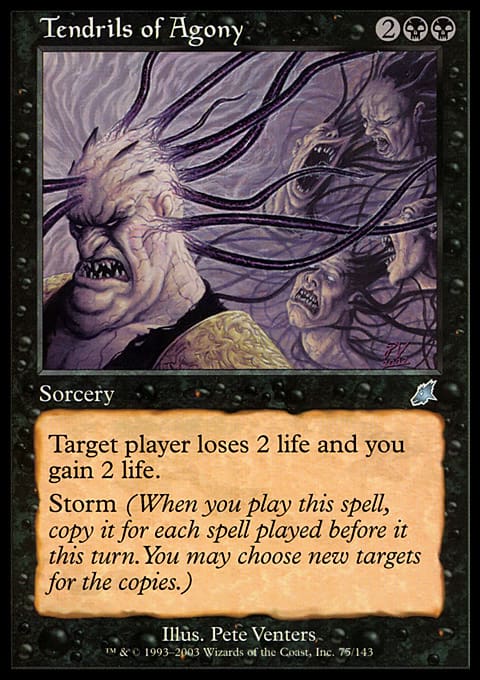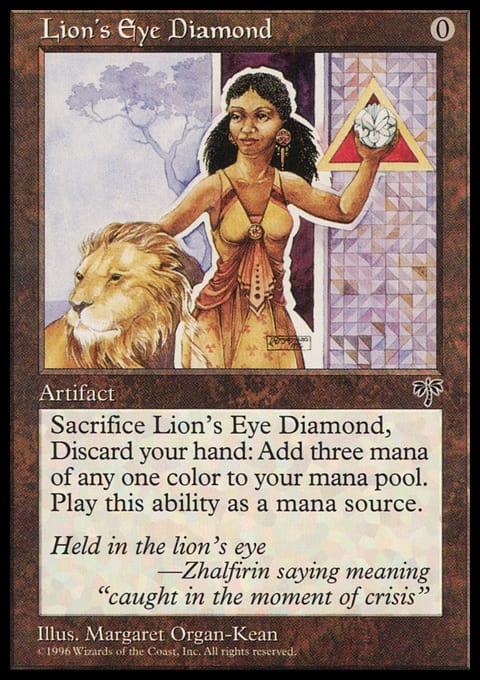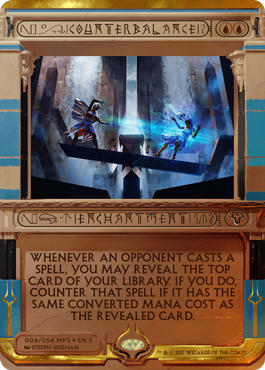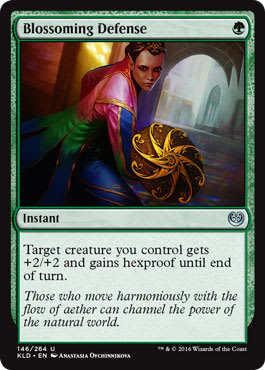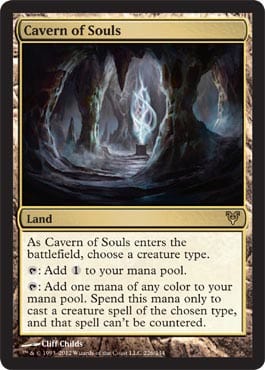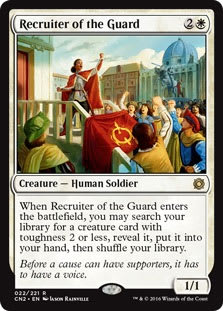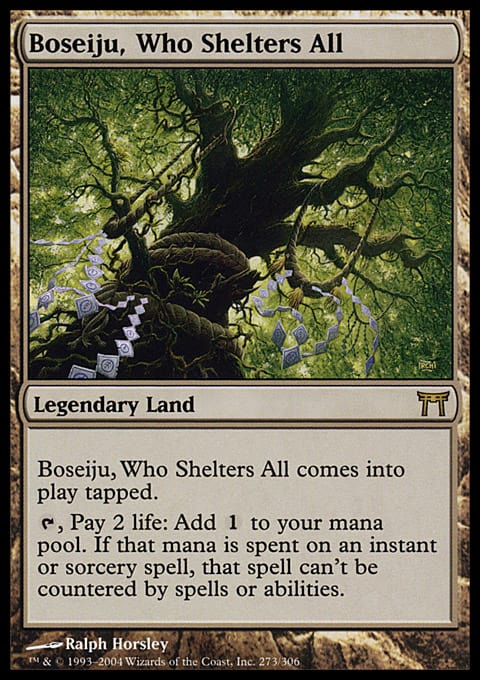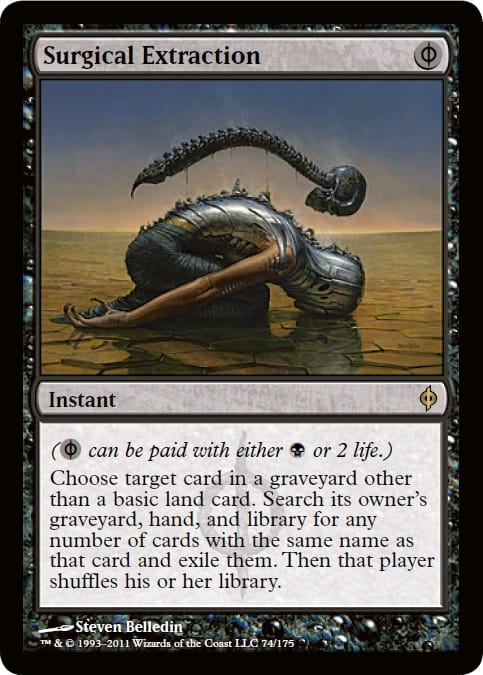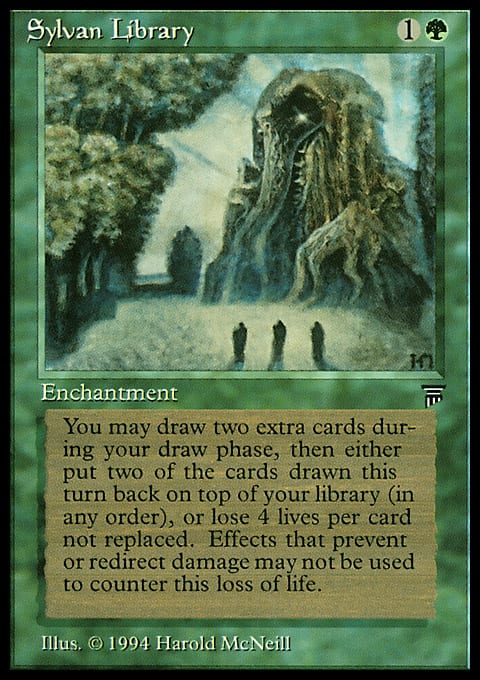Sometimes, it pays to step back and take a moment to recognize how surreal our lives in the 21st century have become. I mean, think about it. We are nothing more than primates with overgrown brains, yet I’m writing this article en route to an island chain five thousand miles away from my home, to play in a tournament for the greatest game humanity has ever invented, and I’ll get there in a single day, sleeping away most of it in a climate-controlled cabin aboard an aircraft flying at over 20,000 feet higher than any animal could ever travel unassisted. I mean, there are even people paid to bring around refreshments to me on this journey! Then, when I arrive, I’ll be able to converse freely with friends and family via my smartphone (which, by the way, has more computing power than the Apollo missions to the moon). While I travel, I can share my thoughts about the amazing game we all play via a giant worldwide network that has allowed unprecedented freedom of information, and I get to dive deep into the intricacies of whatever facet of Magic strikes my fancy each week. Life, and humanity by extension, is absolutely awe-inspiring.
That being said, you know what else is awe-inspiring? A turn-one Griselbrand. Twenty points of Tendrils of Agony before the opponent gets an untap step. Flipping one’s whole deck into the graveyard and winning the game without ever tapping a land for mana. Turning a lowly 1/1 elf into a monstrous 10/5 trampling infecting beast on the second turn, and countering the opponent’s single attempt to interact. Summoning Marit Lage and bashing the opponent with a 20/20 indestructible flyer. Getting indigestion from a lovely meal at the Goblin Burrows and ‘Belching in the opponent’s face on the first turn (well, that one might be more sickening than awe-inspiring, but you get the picture).
Now, for all the hype surrounding the constantly-evolving Modern, for all the excitement at a new Standard (which my team is working on in lovely Hawaii, and which I will break down in excruciating detail following the Pro Tour), there is a certain excitement that just permeates my mind whenever a tournament in my favorite format rolls around. In the next few weeks, we’ll see Eternal Weekend in Columbus, Ohio, and a Legacy Open in Baltimore, Maryland thrust Legacy back into the spotlight. It’s no Vintage, for sure, but the options and power available in Legacy are still enough to make a mage’s head spin. Incidentally, I am convinced that there is no better opportunity in the game for a format specialist to qualify for the Pro Tour than the one that Legacy Grand Prixs offer to Legacy aficionados. If you have any reservations about buying into the format, let this tasting menu of some of my recommendations for quality decks help direct you in the wild world that is your average Legacy event. We’ll start with the most powerful pace-setter for the format, Storm.
Storm ? Legacy| Caleb Scherer
- Spells (46)
- 1 Ad Nauseam
- 1 Rain of Filth
- 4 Brainstorm
- 4 Cabal Ritual
- 4 Dark Ritual
- 1 Dark Petition
- 1 Tendrils of Agony
- 2 Past in Flames
- 2 Preordain
- 3 Cabal Therapy
- 3 Duress
- 4 Gitaxian Probe
- 4 Infernal Tutor
- 4 Ponder
- 4 Lion's Eye Diamond
- 4 Lotus Petal
- Lands (14)
- 1 Swamp
- 2 Island
- 1 Flooded Strand
- 1 Volcanic Island
- 2 Underground Sea
- 3 Misty Rainforest
- 4 Polluted Delta
- Sideboard (15)
- 3 Chrome Mox
- 4 Abrupt Decay
- 2 Krosan Grip
- 1 Cabal Therapy
- 1 Empty the Warrens
- 2 Tendrils of Agony
- 1 Bayou
- 1 Tropical Island
I must confess. I am not a Storm expert by any means, so whenever I need to present a decklist with some authority behind it, I look up Caleb Scherer’s latest creation. I respect the deck immensely when I am constructing my Legacy lists, as it constrains the format by being the most powerful and consistent engine combo deck, but I’ve only played the deck at one event over five years ago. Storm is extremely unfair, most egregiously by taking advantage of one of the more broken interactions in the game. With Lion's Eye Diamond, if you cast an Infernal Tutor and sacrifice the Diamond while holding priority, you can both ensure that the Tutor will be hellbent and generate three more mana to help cast whatever you find with the Tutor. The fireworks that result when you tutor up a Past in Flames or Ad Nauseam are generally enough to end the game on the spot, via a lethal Tendrils of Agony. Add some cantrips, some fast mana via Dark Ritual and Cabal Ritual, and some discard-based disruption to punch a hole in opponents’ countermagic defenses, and you have a lethal combination that turns a game of Magic into as close to a pure solitary mathematical exercise as you can get. No wonder so many mathematically inclined folks find success by counting to ten and casting Tendrils!
Storm balances the power of a deck like Belcher with the consistency provided by the cantrips that make up the backbone of every Blue deck in Legacy, which places it squarely at the forefront of the metagame. It’s a solid go-to if you want to be able to practice for an event by goldfishing (although the tough games in live play are the ones where you have to actually interact with a live opponent, so don’t rely solely on goldfishing to teach you how to play the deck!) It is always a great choice, and the power of some of its more broken starts can hook a player for life.
That said, maybe you aren’t interested in killing your opponent quickly. Maybe you want to grind them into the dust with a thumb-twiddling, frustrating lock that eventually ends in a swarm of angry Angel tokens (if the opponent doesn’t concede first!) In that case, you might want to take a page out of Joe Lossett’s book and play Miracles:
Miracles ? Legacy| Joe Lossett
- Creatures (8)
- 3 Snapcaster Mage
- 2 Venser, Shaper Savant
- 3 Vendilion Clique
- Planeswalkers (2)
- 2 Jace, the Mind Sculptor
- Spells (28)
- 2 Spell Snare
- 3 Force of Will
- 3 Swords to Plowshares
- 4 Brainstorm
- 2 Entreat the Angels
- 2 Ponder
- 4 Terminus
- 4 Counterbalance
- 4 Sensei's Divining Top
- Lands (22)
- 2 Plains
- 4 Island
- 1 Arid Mesa
- 1 Cavern of Souls
- 2 Tundra
- 2 Volcanic Island
- 4 Flooded Strand
- 4 Scalding Tarn
- 2 Karakas
- Sideboard (15)
- 2 Back to Basics
- 2 Moat
- 2 Rest in Peace
- 3 Flusterstorm
- 1 Pyroblast
- 2 Red Elemental Blast
- 1 Swords to Plowshares
- 2 Wear // Tear
Let’s get this out of the way first. Joe’s list is weird. Joe knows what he’s doing, but the rest of us don’t, so if you’re looking for a more standardized build, you might want to poke around online and find a deck with Monastery Mentor rather than the Venser, Shaper Savants and Vendilion Cliques that are a hallmark of a Lossett list. Whatever you choose, Miracles is great. It puts a huge constraint on the format for any deck that wants to try to fight fair. If you don’t have a way to break through a Counterbalance-Sensei's Divining Top lock, or if you’re extremely vulnerable to Terminus, and especially if you don’t have a battle-tested game plan for what axis you want to fight Miracles on, you will lose to this deck that comprises fifteen percent or more of most Legacy metagames. And don’t think that Miracles is a one-trick pony either. With unprecedented card selection, a Miracles opponent can beat up on theoretically bad matchups like Eldrazi or Shardless BUG with Blood Moon or Back to Basics, it can win quickly with Monastery Mentor or surprise Entreat the Angels, and it can even shut out ground creatures completely with a hard-to-answer card like Moat.
My preferred answer to the Miracles menace is to pressure it via Delver’s traditional aggressive suite of creatures, then if those are answered deploying a True-Name Nemesis to demand a fresh Terminus, while keeping the lock off with Abrupt Decays and Snapcaster Mages to flash them back. One of Miracles’ biggest weaknesses is a lack of lifegain, so the reach offered by Deathrite Shaman and Lightning Bolt+Snapcaster Mage sequences can often put the opponent in a squeeze that they won’t be able to get out of in time.
Now, at the last North American Legacy Grand Prix, Joe Lossett lost in the finals to Clay Spicklemire, piloting the ever-tricky Infect deck. This is the third option for a serious Legacy competitor, and it’s got a lot going for it in the free-wins department as well.
Infect ? Legacy | Clay Spicklemire
- Creatures (12)
- 4 Blighted Agent
- 4 Glistener Elf
- 4 Noble Hierarch
- Spells (29)
- 1 Become Immense
- 2 Berserk
- 2 Crop Rotation
- 2 Spell Pierce
- 3 Force of Will
- 3 Vines of Vastwood
- 4 Brainstorm
- 4 Daze
- 4 Invigorate
- 3 Gitaxian Probe
- 1 Sylvan Library
- Lands (19)
- 1 Forest
- 1 Pendelhaven
- 1 Wasteland
- 4 Inkmoth Nexus
- 4 Misty Rainforest
- 4 Tropical Island
- 4 Windswept Heath
- Sideboard (15)
- 1 Grafdigger's Cage
- 1 Spellskite
- 1 Viridian Corrupter
- 3 Flusterstorm
- 1 Force of Will
- 2 Krosan Grip
- 2 Nature's Claim
- 2 Submerge
- 1 Bojuka Bog
- 1 Wasteland
I will note that the new card from Kaladesh, Blossoming Defense, will likely find a place in this archetype, possibly replacing or supplementing Vines of Vastwood in small quantities.
Now, Infect is actually very similar structurally to Delver decks, but it exchanges a weak matchup against the actual Delver decks (due to the lack of removal forcing it to "be the beatdown" no matter what) for explosiveness and unfair starts that can outrace even the fastest Storm or Show and Tell draws. Infect also gains against Colorless Eldrazi, Death and Taxes, and Elves because of the way that it ignores low-removal decks and powers through the one or two interactive spells they can present in a relevant timeframe. As powerful as Thought-Knot Seer, Mother of Runes, or Wirewood Symbiote may be, they simply don't matter against a 10/10 Inkmoth Nexus. Infect is a great choice for any metagame in which you do not expect Delver decks to be heavily represented, and I believe a larger complement of Spellskites can even pull that match toward even. However, if you want to be able to go toe-to-toe with Delver decks and don't expect many Berserking Blighted Agents, your best bet (and the cheapest competitive deck in Legacy, to boot) lies with the Thought-Knot Seers and their ugly Eldrazi ilk.
Eldrazi ? Legacy | Ben Friedman
- Creatures (25)
- 2 Endbringer
- 3 Simian Spirit Guide
- 4 Eldrazi Mimic
- 4 Endless One
- 4 Matter Reshaper
- 4 Reality Smasher
- 4 Thought-Knot Seer
- Spells (10)
- 4 Chalice of the Void
- 4 Thorn of Amethyst
- 2 Umezawa's Jitte
- Lands (25)
- 2 City of Traitors
- 2 Mishra's Factory
- 4 Ancient Tomb
- 4 Cavern of Souls
- 4 Eldrazi Temple
- 4 Wasteland
- 1 Urborg, Tomb of Yawgmoth
- 4 Eye of Ugin
- Sideboard (15)
- 2 Ratchet Bomb
- 3 Phyrexian Revoker
- 4 Faerie Macabre
- 4 Oblivion Sower
- 2 All Is Dust
This is an extremely frustrating deck to play against for many of the best decks in the format. Delver and Miracles each struggle with the Eldrazi in their own way; whether by turn-one Chalice of the Void locking out half of the deck's best spells or Cavern of Souls dropping in uncounterable Thought-Knot Seers and Reality Smashers. Eldrazi is an excellent choice if you are not interested in buying dual lands, but want to stick it to those who do drop a mortgage payment on a mana base. The deck is pretty weak against Sneak and Show, specifically, but Lands is also extremely rough, as a big pack of recursive mana denial is not what Eldrazi wants to face. I also love this deck on the play, but it gets way, way worse on the draw if your opponent can deploy a Delver or Deathrite Shaman and back it up with Daze. Decks that are so dependent on being on the play face a stiff penalty in my internal judgment for selecting a deck for a tournament; that said, decks without Brainstorm face a similarly stiff penalty in Legacy, so I may just be biased. I think that if I were to play a non-Blue deck in the Brainstorm format, I would actually put Eldrazi third on my list of best options, with the first being an old classic that recently got a shot in the arm from Recruiter of the Guard and Sanctum Prelate.
Death and Taxes ? Legacy| Ben Friedman
- Creatures (26)
- 1 Banisher Priest
- 1 Thalia, Heretic Cathar
- 2 Sanctum Prelate
- 2 Serra Avenger
- 3 Mother of Runes
- 3 Phyrexian Revoker
- 3 Recruiter of the Guard
- 3 Stoneforge Mystic
- 4 Flickerwisp
- 4 Thalia, Guardian of Thraben
- Spells (11)
- 4 Swords to Plowshares
- 1 Batterskull
- 1 Sword of Fire and Ice
- 1 Umezawa's Jitte
- 4 Aether Vial
- Lands (23)
- 10 Plains
- 1 Cavern of Souls
- 1 Mishra's Factory
- 4 Rishadan Port
- 4 Wasteland
- 3 Karakas
- Sideboard (15)
- 2 Council’s Judgment
- 1 Sword of War and Peace
- 3 Rest in Peace
- 2 Pithing Needle
- 2 Path to Exile
- 2 Gideon, Ally of Zendikar
- 1 Containment Priest
- 2 Ethersworn Canonist
Year after year, Death and Taxes has inched closer and closer to the realm of tier 1, and I believe that the recent additions from Conspiracy: Take the Crown have put it over the top. Finally, Death and Taxes has its own Goblin Matron in Recruiter of the Guard, which adds immensely to its consistency. Sanctum Prelate puts a huge dent in Storm, Sneak and Show, Lands, Delver decks, and even Miracles. If your deck plays Brainstorm, your deck does not want to face Prelate, and the rest of the Death and Taxes deck still fulfills its classic duty of playing infuriating creatures and pecking the opponent to death while invalidating their cards via hate bears, mana denial, and Mother of Runes. It's just another example of Wizards of the Coast sticking up for the perpetual underdogs in an attempt to promote alternatives to the parade of dual lands that define most of Legacy. This time, I think it just might have worked too well. This is my sleeper recommendation, and my vote for most underrated deck in Legacy. A serious competitor would do well to pay attention to how Death and Taxes develops over the coming months.
Now, the previous two non-Blue decks have been on the cheaper end of Legacy, and that's great! It's a boon for the format when decks with one (or even zero) colors can compete on equal footing in an expensive format. But what if you have a lot of money you want to spend on a truly remarkable Legacy deck? If you can foot the bill, you too can take a vacation at Pendrell Vale with Marit Lage, and I think the rewards are well worth it. Lands is always hugely overrepresented in my local Legacy tournaments, but for good reason. The deck beats up on fair Blue decks pretty badly! If you want a ton of free equity when you enter a Legacy tournament, the deck with some of the most busted surprise finishes alongside the grindiest engine in the format is also the only one that is over half lands. Now, sometimes Legacy players come up with odd names for their decks, like Death and Taxes, but this deck name is a bit more straight up.
Lands ? Legacy | Ben Friedman
- Spells (25)
- 4 Crop Rotation
- 4 Punishing Fire
- 4 Gamble
- 4 Life from the Loam
- 1 Manabond
- 4 Exploration
- 4 Mox Diamond
- Lands (35)
- 1 Forest
- 1 Bojuka Bog
- 1 Glacial Chasm
- 1 Karakas
- 1 Riftstone Portal
- 1 The Tabernacle at Pendrell Vale
- 1 Verdant Catacombs
- 1 Windswept Heath
- 1 Wooded Foothills
- 2 Taiga
- 2 Tranquil Thicket
- 3 Dark Depths
- 3 Maze of Ith
- 4 Grove of the Burnwillows
- 4 Rishadan Port
- 4 Thespian's Stage
- 4 Wasteland
- Sideboard (15)
- 3 Chalice of the Void
- 4 Sphere of Resistance
- 2 Tireless Tracker
- 1 World Breaker
- 3 Krosan Grip
- 1 Boseiju, Who Shelters All
- 1 Dark Depths
Okay, so there are a lot of cool things you can do with Lands, including some awesome innovations I’ve seen locally. Boil and Boseiju, Who Shelters All combine for a huge haymaker against Miracles, and you can even main-deck some number of Ghost Quarter to eventually completely lock Miracles out of White mana. From there, winning with a 20/20 is academic!
I recognize the power of Lands, and if you’re tired of endless midrange Blue decks and Brainstorm battles, you’d do well to try it out. Replacing Rishadan Ports with Ghost Quarters may sound like blasphemy, but if you need a budget option on MTGO, having a virtual eight Wastelands offers a lot of benefits that aren’t readily apparent. I wouldn’t want to play against Reanimator or Sneak and Show with this deck, but most of the other combo matchups are eminently winnable. This deck operates on a different wavelength than most of the format, and it rewards those who put in the time and effort to learn the details. What’s not to love?
Well, there’s one card that I don’t love seeing if I’m a Lands player. Surgical Extraction, the oft-maligned, oft-misunderstood piece of graveyard hate that cripples most Lands decks, is just what the doctor ordered as a four-of in my Delver sideboard.
I’ve discussed it before, and I’m sure I’ll talk about this deck until I’m Blue in the face, but Delver is and will continue to be my pick for any Legacy tournament for the foreseeable future. I know that Noah Walker has his Young Pyromancers, but my love affair is with a different value-oriented 2-drop. Snapcaster Mage, the one who does it all, increasing the impact of your sideboard spells while increasing the virtual density of removal against aggro and countermagic against control. I’d sit down any day and battle against a Young Pyromancer build with my Four-Color Delver list, and if you embrace your role as the control, you’ll be happy to do the same.
Let’s get to the list, which has remained relatively static for the last couple months.
4-Color Delver ? Legacy | Ben Friedman
- Creatures (15)
- 2 Gurmag Angler
- 2 True-Name Nemesis
- 3 Snapcaster Mage
- 4 Deathrite Shaman
- 4 Delver of Secrets
- Spells (26)
- 3 Abrupt Decay
- 3 Spell Pierce
- 4 Brainstorm
- 4 Daze
- 4 Force of Will
- 4 Lightning Bolt
- 4 Ponder
- Lands (19)
- 2 Scalding Tarn
- 2 Tropical Island
- 2 Volcanic Island
- 3 Flooded Strand
- 3 Polluted Delta
- 3 Underground Sea
- 4 Wasteland
- Sideboard (15)
- 2 Pithing Needle
- 1 Dismember
- 2 Flusterstorm
- 4 Surgical Extraction
- 2 Umezawa's Jitte
- 2 Painful Truths
- 2 Thoughtseize
The only real changes I’d consider are a Sylvan Library over a Painful Truths in the sideboard, with options to shave a Surgical Extraction in Lands and Dredge-light metagames for a fourth Abrupt Decay, a Marsh Casualties, or a second Dismember. This is the Delver deck that can grind out Miracles, the Delver deck that can go toe-to-toe with Shardless BUG, the Delver deck with a virtual ten main-deck removal spells for the mirror match, and the Delver deck that actually beats Lands. You also rarely flood compared to a deck like Temur Delver, as even with four lands and a Deathrite Shaman, you’re frequently able to make use of all your mana each turn.
In exchange, this is the Delver deck with the most awkward mana base for purposes of battling against Death and Taxes and the like. It needs to get to 3 mana sources to fully function, which is a disadvantage if you expect many Wastelands to come your way. It’s also extremely vulnerable to Blood Moon, but all Delver decks share this weakness, so it’s not like you are hurting yourself more than you otherwise would with this mana base. I’m almost certain to register this exact 75 at upcoming Legacy tournaments, and if you take the time to learn how to play this more flexible, more controlling build of Delver, you’ll be rewarded appropriately. The biggest edge with the deck comes from opponents mis-assigning their role as the beatdown at points in the game, and when you turn the corner, their failing to recognize that True-Name Nemesis is unblockable, in addition to being an unbreakable wall. Snapcaster Mage and Lightning Bolt are a hell of a team when it comes to early removal, but they’re even better as a two-card combo to end the game out of nowhere.
There are obviously a huge number of options in Legacy, and dozens of the decks I haven’t named are viable for a player who learns their deck inside and out. Everything is possible in Legacy, from Cloudpost to Elves to Burn, but the seven decks listed above are slightly ahead of the pack as the format currently stands. In the end, Legacy is sort of like a visit to the ice-cream store. Whatever flavor you choose, you’ll enjoy it, but everyone has a favorite. Jump in and find yours!
— Ben














